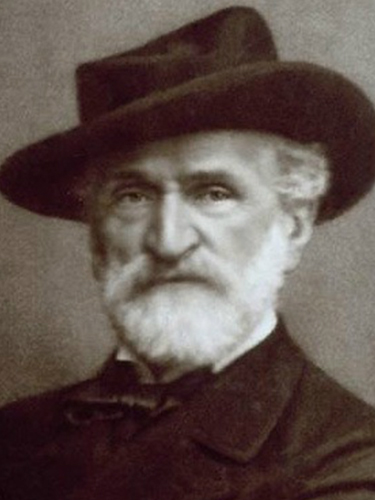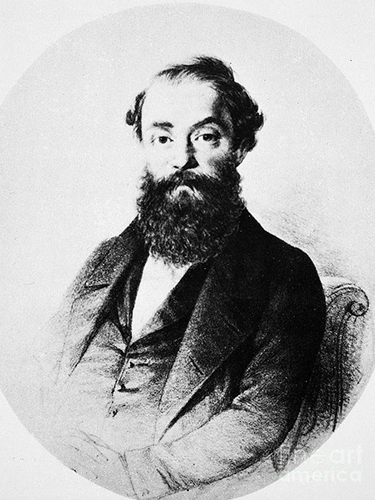
La traviata
Welcome to Lyric's learning resources!
This is your all-access pass to the world of opera and musical theater. Scroll down to access the following resources to help you learn more.
Overview
This GoogleSlides presentation covers essential information your students need to know about the opera.
“Libiamo ne’ lieti calici”
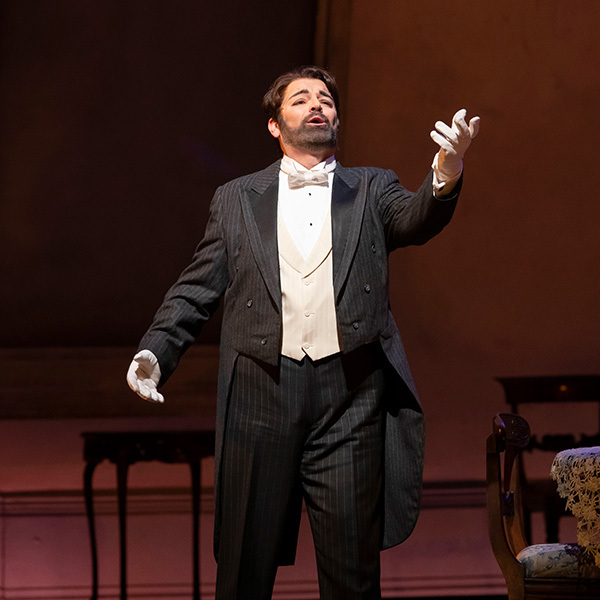
The opera begins at Violetta’s salon. It is a party and Alfredo sings an exuberant musical toast to life and to the hostess. This aria/chorus is also called a “brindisi” (an Italian word meaning drinking song).
Things to listen for:
- As a drinking song, this piece features a hummable melody and a relatively simple accompaniment, mostly the triple-meter “oom pah pah” in the strings.
- Halfway through Alfredo’s verse the accompaniment shifts from the bright, major key to a darker, minor one. This happens when he sings of love and Violetta’s irresistible eyes. Why might Verdi have chosen to do this?
“Un di felice, eterea”
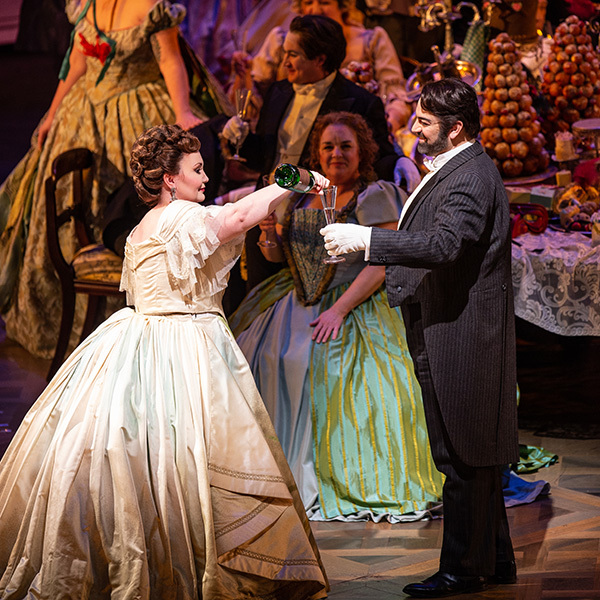
Sung by Alfredo and Violetta
As the party progresses, Alfredo declares his love to Violetta. He stammers the melody until describing his love as the “pulse of the universe… delight of the heart.” This part of the aria, “Di quell’amor,” becomes a musical motto in the opera. Violetta is flattered, but she is not ready to settle down.
Things to listen for:
- Alfredo is generally, sparsely accompanied. Clarinets and flutes together, the bassoons, and horns join him at specific moments. Looking at the words, what is the significance of adding instruments at these points?
- When Violetta joins, her melody is doubled by the clarinets and then the flutes.
“Sempre libera”
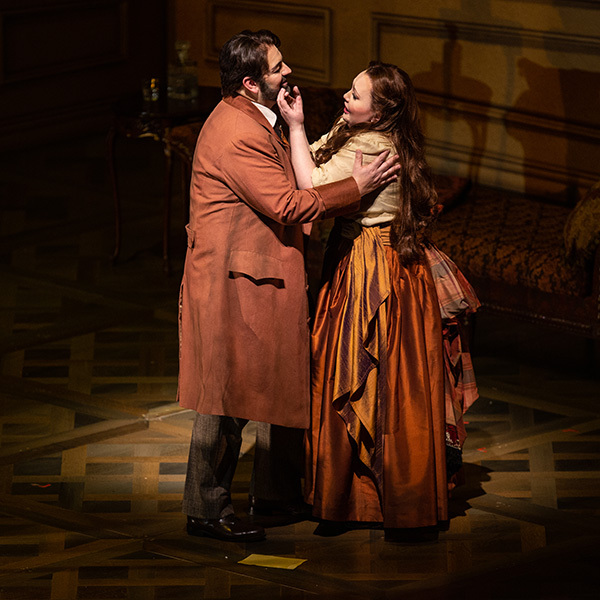
Sung by Violetta and Alfredo
Violetta declares love to be foolish. She must remain “Sempre libera” (Forever free). Her aria is interrupted by hearing Alfredo sing “Di quell’amor,” and she is again shaken. Then she renounces love, but by Act 2, we learn that this does not last long.
Things to listen for:
- Violetta is joyful, and this is depicted by her melody. For every phrase she sings, it begins on a high note and ends on a high note. She is musically keeping her spirits raised.
- When Alfredo’s singing starts, Violetta is caught off guard. Her responses “Oh” and “oh amore” are indicated in the score to show her surprise.
- Near the end of the aria Violetta sings “Folly! Folly! Folly!” Each time the word is repeated the notes are higher, with the last statement bursting into a flurry of high and fast notes. Why do you think Verdi wrote the music for this moment like this?
“Di Provenza il mar, il suol”
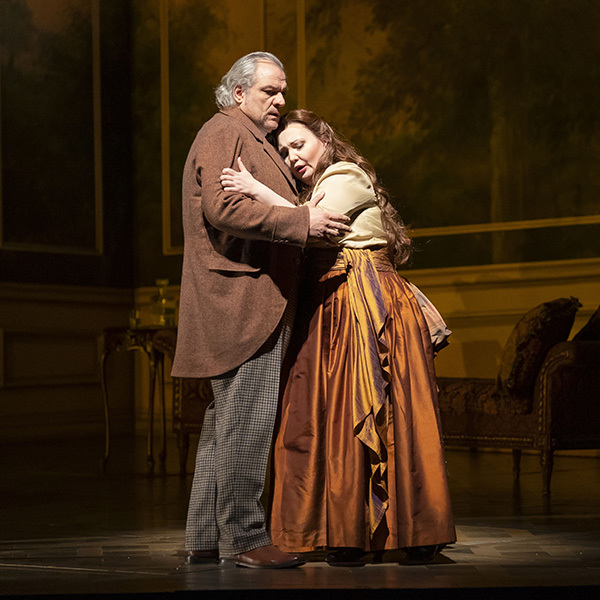
Sung by Germont
In Act 2, Violetta and Alfredo are living together in domestic bliss. Alfredo’s father, Giorgio Germont, comes to plead with Violetta, asking her to end her relationship with his son. He wears down Violetta and sings of the family life that Alfredo is missing in Provence, France.
Things to listen for:
- The orchestra is playing slowly repeating rising and falling notes. Germont’s singing is soft and gets louder then soft again. Both of these musically paint a picture of the sea near Provence.
- Throughout this aria, Germont repeats quite a bit. Identify some of the lines in the translation that get repeated. Why might these be sung multiple times?
“Parigi, o cara”
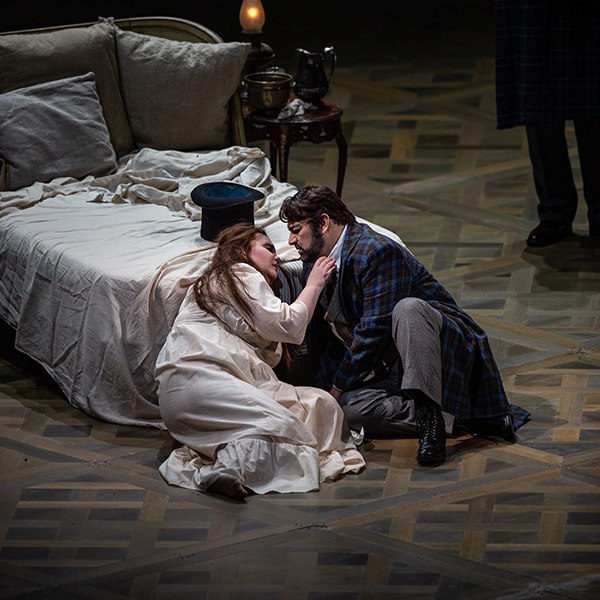
Sung by Violetta and Alfredo
Alfredo arrives at Violetta’s bedside and desperately tries to rally her spirits. In their duet, his initial music resembles a lullaby, as he comforts her with the promise of a happy future away from the tumult of Paris. And she repeats this melody as she tries to bolster her hope.
Things to listen for:
- The accompaniment retains the “oom pah pah” quality of Alfredo’s boisterous “Libiamo…” as well as his love-filled “Un di felice…, “ but this time everything is slower, softer, and in a somber minor key.
- In the second part of this clip, Violetta repeats the verse from Alfredo. They sing together starting on one particular line. Why might this line be significant in relation to this scene?
Historical and cultural timeline
Learn more about this opera and events in the world at the time it was written.
Photos: Todd Rosenberg, Lyric Opera of Chicago
